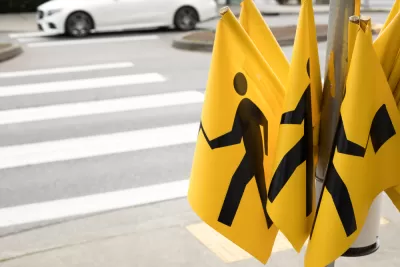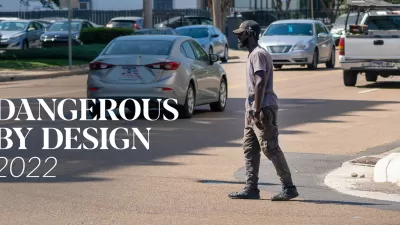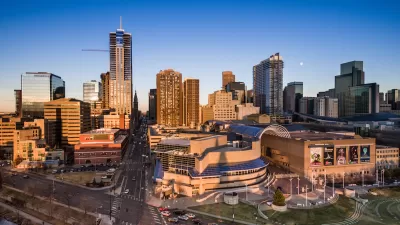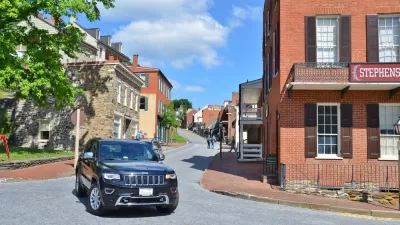Experts from the National Association of City Transportation Officials (NACTO) present four steps for reducing the number of pedestrians killed by drivers.

As a supplement to the “Dangerous by Design 2022” report, published in July by Smart Growth America, Alex Engel and Kate Fillin-Yeh provide a playbook for reducing the unnecessary levels of carnage on U.S. streets and roads.
The four steps recommended by Engel, senior manager of communications for NACTO, and Fillin-Yeh, director of strategy for NACTO, include the following, with a lot more specifics and examples provided in the source article, published by Smart Growth America:
- Analyze where the worst streets are and who needs to be in the room for change.
- Reset speed limits to be compatible with human life.
- Use proven street designs that save lives and make places more vibrant.
- Document results, iterate, and share them out.
As documented by the report, and noted at the outset of the article, “More than 6,500 people were struck and killed while walking in 2020, a 4.7 percent increase over 2019, even as driving decreased overall because of the pandemic’s unprecedented disruptions to travel behavior.”
FULL STORY: How to redesign your city’s most dangerous streets to save the most lives

Maui's Vacation Rental Debate Turns Ugly
Verbal attacks, misinformation campaigns and fistfights plague a high-stakes debate to convert thousands of vacation rentals into long-term housing.

Planetizen Federal Action Tracker
A weekly monitor of how Trump’s orders and actions are impacting planners and planning in America.

Chicago’s Ghost Rails
Just beneath the surface of the modern city lie the remnants of its expansive early 20th-century streetcar system.

Bend, Oregon Zoning Reforms Prioritize Small-Scale Housing
The city altered its zoning code to allow multi-family housing and eliminated parking mandates citywide.

Amtrak Cutting Jobs, Funding to High-Speed Rail
The agency plans to cut 10 percent of its workforce and has confirmed it will not fund new high-speed rail projects.

LA Denies Basic Services to Unhoused Residents
The city has repeatedly failed to respond to requests for trash pickup at encampment sites, and eliminated a program that provided mobile showers and toilets.
Urban Design for Planners 1: Software Tools
This six-course series explores essential urban design concepts using open source software and equips planners with the tools they need to participate fully in the urban design process.
Planning for Universal Design
Learn the tools for implementing Universal Design in planning regulations.
planning NEXT
Appalachian Highlands Housing Partners
Mpact (founded as Rail~Volution)
City of Camden Redevelopment Agency
City of Astoria
City of Portland
City of Laramie





























